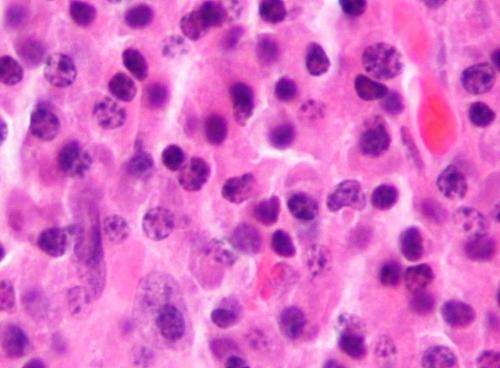This article has been reviewed according to Science X's editorial process and policies. Editors have highlighted the following attributes while ensuring the content's credibility:
fact-checked
peer-reviewed publication
proofread
Therapy resistance in multiple myeloma: Molecular analyses of individual cancer cells reveal new mechanisms

All cancer cells—even those within the same tumor—differ from each other and change over the course of a cancer disease. Scientists at Heidelberg University Hospital, the Medical Faculty in Heidelberg and the German Cancer Research Center discovered molecular changes in multiple myeloma that help individual cancer cells to survive therapy. The study was published in the journal Blood.
Even within one type of cancer, no two cells are exactly the same. Although a patient's cancer cells are cell clones, resulting from the division of an original cell, they are different at a molecular level. As a result, some cancer cells manage to escape the therapies—also known as resistance. The bone marrow cancer multiple myeloma is a prime example of the diversity of cell clones within a type of cancer and thus a pronounced resistance to therapy.
In order to better understand the underlying mechanisms of therapy-resistant cells, researchers from Heidelberg University Hospital (UKHD) and the German Cancer Research Center (DKFZ) examined thousands of cancer cells from myeloma patients before and after therapy. They collected, mapped and characterized comprehensive data over a therapy period of up to 10 years.
The scientists Dr. Alexandra Poos and Dr. Nina Prokoph, with the guidance of Dr. Niels Weinhold and Professor Marc Raab of the Clinic for Hematology, Oncology and Rheumatology at the UKHD and Professor Karsten Rippe, Head of the Division of Chromatin Networks at the DKFZ, have gathered and compared information on the genetic make-up of individual myeloma cells as well as on the composition of the tumor microenvironment within myeloma patients using advanced sequencing techniques. Based on this data, the scientists created maps of the changes in each individual cell clone.
Remarkably, different cell clones that survived the therapy subsequently showed very similar molecular changes, including interactions with healthy bone marrow cells. This suggests that genetically distinct cancer cells could be targeted with the same therapeutic approach in the future.
"Our study shows how a so-called 'multi-omics analysis' can be used to track and characterize distinct resistant cancer cell clones over a longer period of time," said Prof. Rippe.
This analysis not only sheds light on the complex mechanisms underlying therapy resistance in multiple myeloma, but also paves the way for identifying molecular targets for more effective treatments.
"If we understand the hidden vulnerabilities of cancer cells, we can focus on treating these to enhance the care of our myeloma patients," reports Dr. Niels Weinhold, Head of Translational Myeloma Research at the UKHD.
More information: Alexandra M. Poos et al, Resolving therapy resistance mechanisms in multiple myeloma by multiomics subclone analysis, Blood (2023). DOI: 10.1182/blood.2023019758















